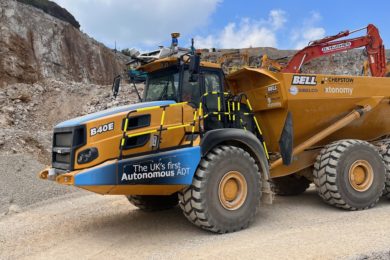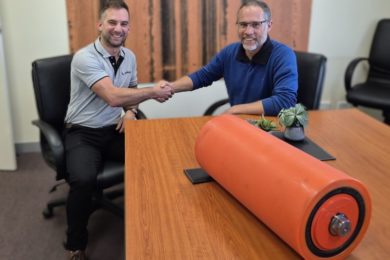In a move that has angered many, US Secretary of Energy Samuel W. Bodman has announced a restructured approach to its FutureGen project that aims to demonstrate cutting-edge carbon capture and storage (CCS) technology at multiple commercial-scale Integrated Gasification Combined Cycle (IGCC) clean coal power plants. The strategy is for the US Department of Energy (DOE) to join industry in efforts to build IGCC plants by providing funding for the addition of CCS technology to multiple plants that will be operational by 2015. This approach builds on technological research and development advancements in IGCC and CCS technology achieved over the past five years and is expected to at least double the amount of carbon dioxide sequestered compared to the concept announced in 2003.
Secretary Bodman also announced President Bush’s budget request of $648 million for the DOE Office of Fossil Energy’s advanced coal technology research, development and demonstration program for Fiscal Year (FY) 2009. The FY09 budget requests $407 million for coal research — including development of more efficient gasification and turbine technologies, innovations for existing coal power plants, and large-scale CCS injection tests — and $241 million to demonstrate technologies for cost-effective carbon capture and storage for coal-fired power plants, including $156 million for the restructured FutureGen approach and $85 million for DOE’s Clean Coal Power Initiative. This $648 million request represents a $129 million increase from the President’s FY2008 request and is the largest amount requested for DOE’s coal program in more than 25 years.
“This restructured FutureGen approach is an all-around better investment for Americans. As technological advancements have been realised in the last five years, we are eager to demonstrate CCS technology on commercial plants that when operational, will be the cleanest coal-fired plants in the world. Each of these plants will sequester at least 1 Mt of carbon dioxide annually and help meet our nation’s rapidly growing energy demand,” Secretary Bodman said. “Coal is our nation’s most abundant energy resource powering over half of the homes in America. To ensure a clean, reliable and affordable energy future, the DOE is planning the largest budget request in over 25 years focusing on demonstrating advanced technology like carbon capture and storage so that the technology can be perfected and rapidly deployed across the country.”
Reuters take is that “ballooning construction costs that nearly doubled the price tag for building the world’s cleanest coal-burning power plant to $1.8 billion prompted the US Energy Department on Wednesday to pull the plug on funding the project. The department’s decision elicited howls of protest from Illinois officials who accused the department of playing politics by panning the project after competing sites in Texas were rejected. Department officials denied those accusations.”
“We feel that (Bodman) misled us and the people of Illinois, creating false hope in a FutureGen project which he had no intention of funding or supporting,” Illinois lawmakers including Democratic Sen. Dick Durbin wrote in a letter to President Bush.
National Mining Association (NMA) President and CEO Kraig R. Naasz emphasised the need for an accelerated and sustained commitment to the research, development and deployment of technologies capable of successfully managing carbon dioxide emissions at coal-fueled power plants. He made the case for such an effort following the January 29 meeting between Bodman and the Illinois congressional delegation at which Bodman announced the DOE’s intention to end its support for the FutureGen Project.
DOE’s plans drew a sharp rebuke from many Senators, including Barack Obama, who wrote to President Bush saying they had “lost confidence in Secretary Bodman” and accused Bodman of “misleading them and the people of Illinois, creating false hope in a FutureGen project which he had no intention of funding or supporting.”
“We are writing today to urge you to keep FutureGen on track, so that this project can begin construction and become a reality,” the delegation said. The letter said the Illinois congressional delegation along with the state of Illinois and the FutureGen Alliance “stand ready to move this important project forward,” adding that it would be “unfortunate to wait for the next administration to complete the project that you announced and have promoted for more than five years.”
NMA’s Naasz called for “a strong partnership between coal-based energy providers and policymakers to supply the necessary funding and technological direction,” saying the FutureGen project “has been and should continue to be a key part of our commitment to a secure and clean energy future. NMA remains hopeful that the partnership between DOE and the FutureGen Alliance, which includes US and international coal producers and coal-based utilities, can be cemented and the project can realise the potential it was designed to achieve.”
Naasz stressed that all Americans have benefited from existing federal clean coal technology programs, saying America’s “energy security and economic future depend on FutureGen and projects like it to continue that vital effort.”
Futur eGen Alliance CEO Michael Mudd said in a January 30 statement that the alliance “is committed to its co-operative agreement with DOE” and will continue to work with Congress, the state of Illinois, foreign governments and other project stakeholders “to keep FutureGen moving ahead at Mattoon, Illinois.”
Mudd emphasised that the project “is critical to the rapid development and deployment of near-zero emission power technology around the world.” Mudd said the FutureGen Alliance “remains committed” to keeping FutureGen on track. “We owe it to the people of Illinois, to the alliance members who have contributed significant funds and resources to bring the project to this stage and to society which depends on technology to provide clean, affordable and secure energy.”
The DOE has issued a Request for Information (RFI) that seeks industry’s input by March 3, 2008, on the costs and feasibility associated with building clean coal facilities that achieve the intended goals of FutureGen. Following this period and consideration of industry comment, DOE intends to issue a Funding Opportunity Announcement – or competitive solicitation – to provide federal funding under co-operative agreements to equip IGCC (or other clean coal technology) commercial power plants that generate at least 300 MW, with CCS technology aimed at accelerating near-term technology deployment. Initial input from industry will assist in determining how many demonstrations can be commissioned.
This restructured approach allows DOE to maximise the role of private sector innovation, provide a ceiling on federal contributions, and accelerate the Administration’s goal of increasing the use of clean energy technologies to help meet the steadily growing demand for energy while also mitigating greenhouse gas emissions. Under this plan, DOE’s investment would provide funding for no more than the CCS component of the power plant – not the entire plant construction, compared with the FutureGen concept announced in 2003 where the federal government would incur 74% of rising costs. This would allow for commercial operation of IGCC power plants equipped with CCS technology to begin as soon as the plants are commissioned, between 2015 and 2016.
The FutureGen concept announced in 2003 planned the creation of a near-zero emissions, 275 MW power plant that produced hydrogen and electricity from coal on a smaller-than-commercial-scale, serving as a laboratory for technology development. The DOE says the “announcement builds on advancements in technology made since 2003 and allows for electricity to be produced and greenhouse gas emissions sequestered at a rate and scale that offers tremendous potential for commercial viability. The restructured approach will focus on separating carbon dioxide (CO2) for CCS, and does not include hydrogen production, which the concept announced in 2003 included; however, hydrogen production for commercial use will remain an important component of DOE’s other energy initiatives. Also, engagement with the international community will remain an integral part of DOE’s efforts to advance CCS technology on a global scale.
“The four sites – two in Illinois and two in Texas – evaluated in the Department’s Environmental Impact Statement issued in November 2007, including the site announced by the FutureGen Alliance in December 2007, Mattoon, Illinois, may be eligible to host a commercial-scale IGCC plant with CCS technology. The site analysis and characterisation data at these sites may be applicable to future environmental analyses under this restructured approach. More than one site may be selected as a host for the commercial demonstration of CCS technology and DOE encourages applicants to include these four sites in their consideration for this restructured approach. Also, the FutureGen Alliance’s 13 member companies may compete with all the other applicants.
“This restructured approach builds on the Administration’s investment of more than $2.5 billion in clean coal technology since 2001, which includes small-scale carbon sequestration projects and IGCC research that have advanced our understanding of the potential for clean coal technology. It is also consistent with a key recommendation of last year’s Massachusetts Institute of Technology Study, The Future of Coal, which indicated that “the main purpose of the [FutureGen] project should be to demonstrate commercial viability of coal-based power generation with CCS.” The Administration’s Clean Coal Power Initiative, as well as awards of $1.65 billion in clean coal tax incentives, and the use of loan guarantees, are other key components of DOE’s efforts to demonstrate the potential of advanced clean coal technologies to meet growing energy demand.”








